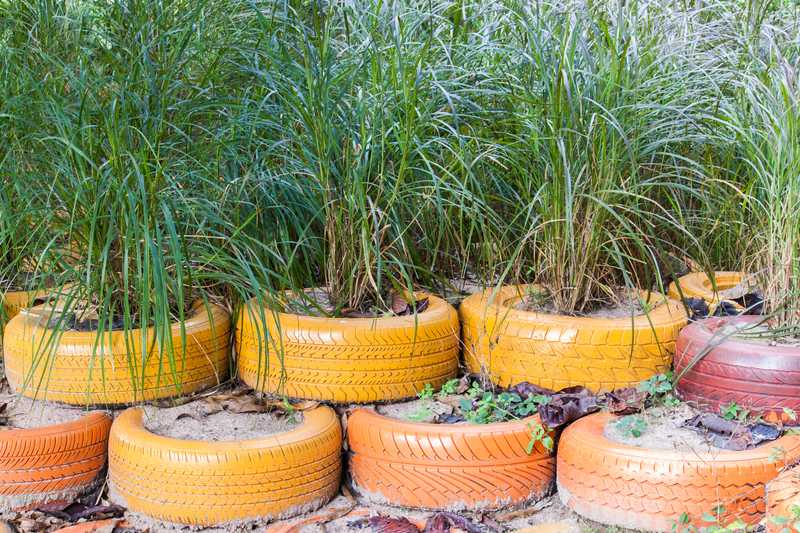Creative Solutions to the PPE Waste Disposal Dilemma
Introduction: Navigating the PPE Waste Crisis
The ongoing global pandemic spurred a dramatic rise in the use of personal protective equipment (PPE), including masks, gloves, gowns, and face shields. While essential for health and safety, this surge has created a new crisis: the PPE waste disposal dilemma. Landfills are overloaded, oceans littered, and communities face mounting environmental risks. Addressing this challenge calls for innovative, sustainable, and scalable creative solutions. In this comprehensive guide, we will explore eco-friendly approaches, cutting-edge technologies, and community-driven initiatives that tackle PPE waste head-on.

Understanding the Scope of the PPE Waste Problem
What Is PPE Waste?
Personal protective equipment (PPE) waste encompasses disposable masks, N95 respirators, gloves, gowns, face shields, and shoe covers. These single-use items are often made from synthetic polymers like polypropylene, which decompose slowly or not at all. The result is an exponential increase in non-biodegradable waste.
Statistics: The Alarming Rise in PPE Waste
- Over 129 billion disposable face masks and 65 billion gloves are used globally per month.
- Improper disposal leads to contamination of water bodies, wildlife ingestion, and increased pollution.
- Traditional waste management systems are overwhelmed, leading to significant health and environmental hazards.
Environmental Impact of PPE Waste
The environmental repercussions of inadequate PPE waste disposal solutions are severe. Synthetic fibers in discarded masks and gloves can take hundreds of years to degrade, releasing toxic microplastics in the process. Wildlife is at risk of ingesting or entangling in PPE waste, while open burning exacerbates air pollution, posing direct threats to human health.
Traditional PPE Waste Disposal Methods: Challenges and Limitations
Landfilling and Incineration
- Landfills: The most common PPE waste disposal method, but space is limited, and toxins can leach into soil and water.
- Incineration: While it reduces waste volume, incomplete combustion releases hazardous gases like dioxins and furans.
Clearly, we need innovative alternatives to PPE waste disposal that can minimize environmental footprints while ensuring public safety.
Creative Solutions to the PPE Waste Disposal Dilemma
1. Recycling and Repurposing PPE Waste
One of the most promising innovative approaches for dealing with PPE waste is recycling. Traditional recycling facilities cannot handle contaminated PPE, but specialized companies are now designing processes to convert PPE waste into usable products.
- Mechanical Recycling: Used masks and gloves, after disinfection, are shredded and melted to create plastic pellets for manufacturing goods such as construction materials, benches, and bins.
- Chemical Recycling: Advanced pyrolysis and gasification technologies break down polymers into raw chemical feedstocks, creating new plastics or fuels.
- Textile Repurposing: Cleaned and sterilized textile-based PPE like gowns can be upcycled into bags, mats, or industrial wipes.
Case Study: From Face Masks to Asphalt
Researchers in Australia developed a technique to shred single-use masks and mix them with recycled concrete aggregate (RCA) for building roads. This method not only diverts millions of masks from landfills but also improves road durability.
2. Biodegradable and Compostable PPE Innovations
Next-generation design is at the heart of addressing the PPE waste solution dilemma. Biodegradable PPE, made from plant-based polymers and natural fibers, decomposes harmlessly in the environment.
- Plant-Based Mask Materials: Some startups create masks using bamboo fibers, corn starch, or cellulose, which biodegrade in compost heaps within months.
- Edible PPE: Experimental edible gloves and masks are being developed for special applications, providing a zero-waste solution.
Bonus tip: Compostable PPE can be safely processed in industrial composters, generating nutrient-rich soil amendments for agriculture.
3. Advanced Sterilization and Reuse Technologies
While PPE is designed for single-use, new sterilization methods enable safe reuse, drastically cutting down on PPE waste.
- UV-C Sterilization: Ultraviolet light chambers disinfect masks and face shields, allowing multiple uses in medical and industrial settings.
- Vaporized Hydrogen Peroxide (VHP): Used in hospitals to sterilize N95 respirators, reducing overall consumption and disposal.
- Microwave-Based Disinfection: Rapid microwave heating destroys pathogens without damaging mask structures.
These PPE waste disposal solutions concurrently address shortages and environmental concerns.
4. Community-Driven PPE Waste Collection Initiatives
Engaging local communities is pivotal in curbing PPE pollution. Creative collection and awareness campaigns empower individuals and organizations alike.
- Designated PPE Bins: Installing color-coded, clearly labeled PPE collection bins in public spots encourages proper disposal.
- School & Workplace Drives: Organize PPE return days where users can drop off used masks and gloves for responsible management.
- Reward-Based Return Schemes: Incentivize proper PPE disposal with discounts, rewards, or charitable donations.
Result: Cleaner neighborhoods, reduced litter, and broad public participation in PPE waste reduction efforts.
5. Leveraging Digital Platforms for PPE Waste Reduction
Digital transformation isn't limited to efficiency and communication; it plays a vital role in PPE waste disposal solutions.
- Tracking and Mapping Apps: Tech companies are launching apps for hospitals and businesses to monitor PPE inventory and waste output, identifying hotspots for intervention.
- Awareness Campaigns: Social media platforms amplify correct disposal practices and share success stories about creative PPE recycling projects.
Policy, Regulation, and Industry Collaboration
Stricter Regulations for PPE Waste Management
Laws and guidelines are evolving worldwide to manage the unique threats of PPE waste. Governments mandate segregation of potentially contaminated PPE, specialized treatment, and reporting by large waste generators.
- Extended Producer Responsibility (EPR): Policies obligate manufacturers to fund or manage the collection and disposal of PPE post-consumer use.
- Public Procurement Standards: Governments are beginning to prioritize eco-friendly or biodegradable PPE for bulk purchases, accelerating industry change.
Industry Partnerships for Scaling Solutions
Solving the PPE waste disposal dilemma requires collaboration among manufacturers, recyclers, healthcare providers, governments, NGOs, and innovators.
- Waste-to-Energy Projects: Partnerships facilitate turning unrecyclable PPE into energy through advanced incineration equipped with emission controls.
- R&D Consortia: Shared research advances alternative materials and improves recycling efficiency for PPE waste.
- NGO-Driven Education: Non-profits educate communities, lobby for sustainable policies, and organize local clean-up drives.
Global Success Stories in Creative PPE Waste Management
France: EcoMask Program
The French EcoMask initiative collects masks from medical facilities and public sites, sterilizes, and recycles them into reusable industrial materials, setting a new standard for innovative PPE waste solutions.
India: PPE to Bricks
Indian startups mix cleaned PPE waste with construction debris to create eco-bricks used in affordable building projects, both diverting plastics from landfills and providing jobs.
Canada: Mask Recycling Schools Programs
Canadian schools partner with recycling firms to collect and transform single-use masks into school furniture, fostering student engagement and sustainability education.
United States: Road Building from Recycled PPE
Several states have piloted using shredded PPE in asphalt, enhancing road flexibility while eliminating PPE pollution.
How You Can Help: Practical Steps for Individuals and Organizations
Best Practices for Individuals
- Dispose Responsibly: Always deposit masks and gloves in designated PPE or landfill bins--not recycling bins unless specified.
- Switch to Reusable PPE: Where CDC and local guidelines allow, use washable cloth masks and reusable gloves, reducing demand for single-use products.
- Support Eco-Friendly Brands: Purchase biodegradable or plant-based PPE whenever possible.
- Participate in PPE Cleanups: Join or organize local PPE litter clean-up events.
Best Practices for Businesses and Institutions
- Establish PPE Collection Points: Place marked bins for safe disposal and initiate regular pickup with specialized disposal providers.
- Partner with Recyclers: Work with companies specializing in PPE recycling and upcycling.
- Educate Employees: Share proper PPE handling and disposal guidelines to prevent contamination and pollution.
- Set Bulk Procurement Standards: Prioritize suppliers offering sustainable or biodegradable options.

The Future of PPE Waste Disposal Solutions
The search for creative PPE waste management solutions is a race against time for both public health and environmental sustainability. Innovative recycling methods, advanced sterilization, biodegradable materials, and policy reform provide a roadmap. As industries, governments, and individuals all play a part, collaboration and creativity will be the cornerstone of progress. Small changes, multiplied across millions of people and institutions, can transform the PPE waste landscape for generations to come.
With continued effort, robust education, technological advancement, and strategic partnerships, we can turn what was once a wasteful necessity into an opportunity to innovate, protect, and sustain our world.
Recommended Reading & Resources
- World Health Organization: PPE Waste Management
- US EPA: Managing Infectious Waste
- CDC Guidance: COVID-19 Waste Handling
- United Nations Environment Programme: Plastics and PPE Waste
Conclusion: Innovate, Educate, and Collaborate for a Cleaner Future
The PPE waste disposal dilemma is a defining environmental challenge of our era. Through creativity and commitment, we can reimagine waste as a resource and turn the tide on pandemic pollution. Let us adopt these solutions, inspire change, and build a healthier, greener tomorrow--one mask, glove, and gown at a time.
